The story of Canada is filled with both myth and legend. And when it comes to the Anglo-American War of 1812, Canada has made itself look like the victor. Of course, I thought the same thing for the longest time, having learned about the tales of Isaac Brock and Laura Secord. They together single-handedly won victory for Canada over the Americans. But history is far more complex and often messy, especially when two sides claim victory; the other side often will ignore it as a footnote in a broader global conflict, and a fourth group are still angry at their treatment following the war. But this year marked the 210th Anniversary of one of those early pivotal battles, the Battle of Queenston Heights. Ten years ago, during the battle’s bicentennial, I had the honour of being a part of the large group of reenactors who put on a spectacle for the public, having marched from Fort George to the Heights that morning. The weather then was decent, but this year was glorious. So I packed up the family, and we headed for the heights.

Nikon D750 – AF-S Nikkor 70-200mm 1:2.8G
Nikon D750 – AF-S Nikkor 70-200mm 1:2.8G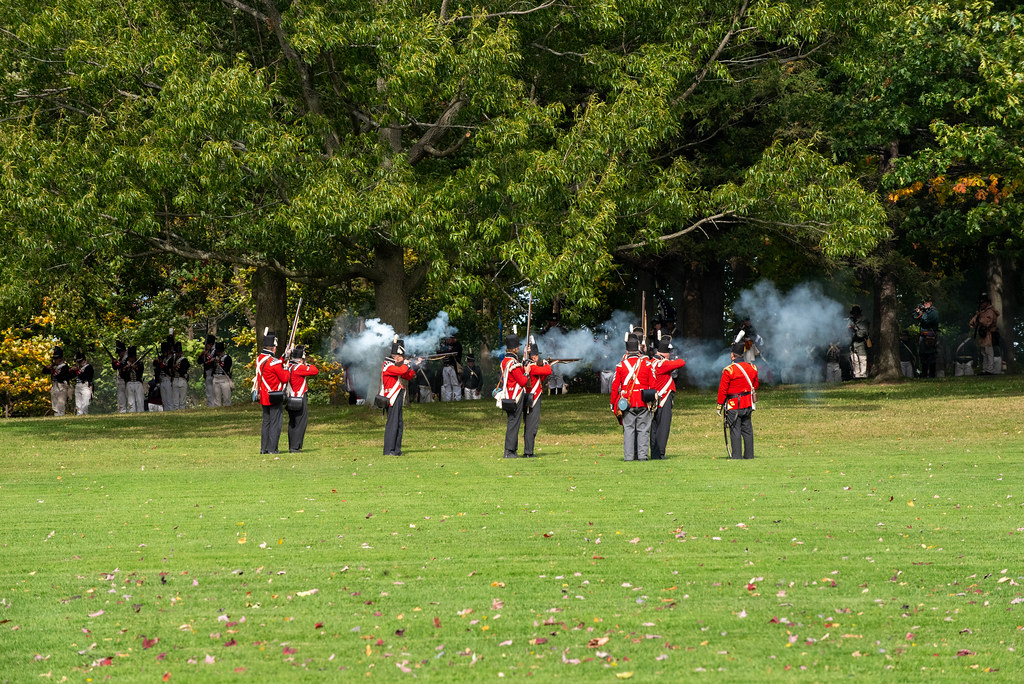
Nikon D750 – AF-S Nikkor 70-200mm 1:2.8G
Nikon D750 – AF-S Nikkor 70-200mm 1:2.8G
When the Americans declared war against the British Empire in the Summer of 1812, their battle plan was simple. Three massed armies would strike at Fort Amherstburg in the west, Queenston at the centre and Montreal in the east. The problem was that 210 years ago, troops lacked strong logistical support, instant communication and a joint operations command. The American army was small, poorly equipped, undertrained, and led by generals from either the Revolutionary War or political appointments. The British were in no better position; Upper Canada was a vast, untamed wilderness, the fortifications were only starting to improve, the regular troops were often drunk and disorderly, and the militia lacked training equipment and was not wholly trustworthy. When war broke out, Major-General Sir Isaac Brock was ordered to conduct a defensive war to keep the Americans from gaining too much land. General Brock, however, preferred a strong offensive action to secure a defensive line inside American territory better. He ordered the capture of Mackinac Island, which went off without a hitch. He forced the surrender of Fort Detroit and the entire western army under General Hull with the support of the Indigenous warriors under Techumseh and the Canadian Militia. Learning of a potential invasion at Queenston by the American Centre army, he rushed to his headquarters at Fort George in Newark (Niagara-On-The-Lake). General Brock found himself hampered by a truce that prevented him from easily moving his troops to position a thin red line along the Niagara River. When the truce expired, he found himself caught on the backfoot but scrambled to cover a vast frontier with the few troops he had.

Nikon D750 – AF-S Nikkor 70-200mm 1:2.8G
Nikon D750 – AF-S Nikkor 70-200mm 1:2.8G
Nikon D750 – AF-S Nikkor 70-200mm 1:2.8G
Nikon D750 – AF-S Nikkor 70-200mm 1:2.8G
At Lewiston, Major-General Stephen Van Rensselaer also found himself in a bind. Being a political appointment commissioned in the New York Militia, he found himself at odds with and often overruled by regular army offers, often with a lower rank than he. Despite this, he had secured himself a decent-sized force to invade Upper Canada. Still, the biggest concern was the Niagara River, a force of nature not to be reckoned with, and the fact that many militia troops refused to invade another country. Under the law, a militia force was only used for defence, never offence. General Brock positioned two companies of the 49th Regiment of Foot at Queenston, the elite Grenadier Company and the Light Company, in the village and heights. Additional companies of the 49th and elements of the 41st were spread out across the other posts at Fort George, Fort Chippawa, and Fort Erie. Aspects of the York and Lincoln militias, Mohawk soldiers under Captain John Norton, and a group of volunteers known as the Coloured Corps, men of colour, often freed slaves or locals that formed an irregular force. And while September turned to October, many of the militia were released to work the harvest, and it didn’t help that the weather began to turn.

Nikon D750 – AF-S Nikkor 70-200mm 1:2.8G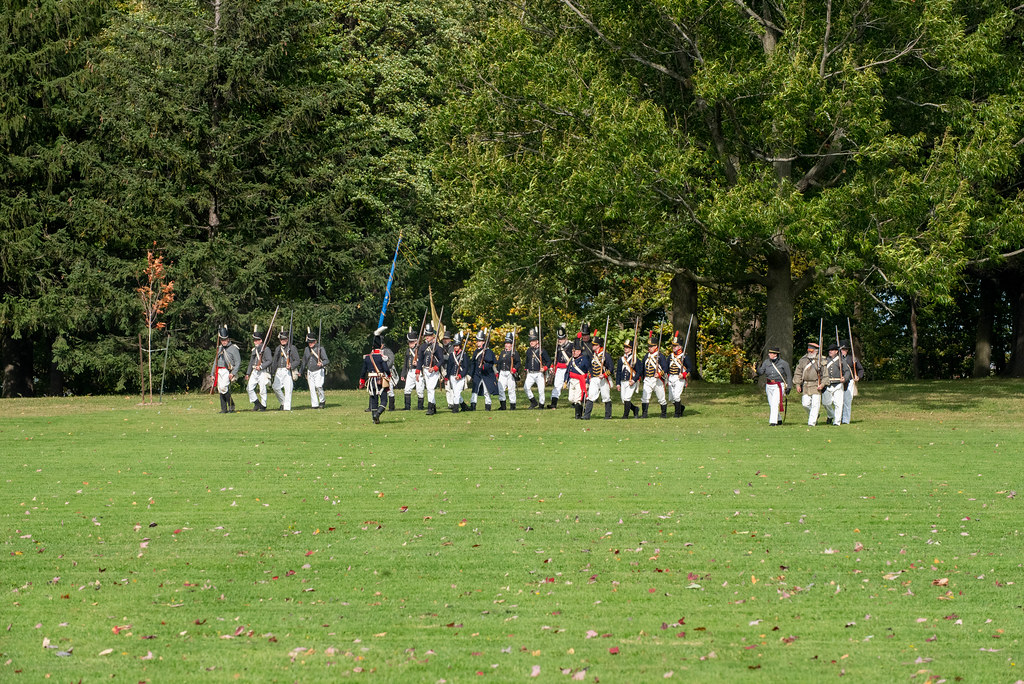
Nikon D750 – AF-S Nikkor 70-200mm 1:2.8G
Nikon D750 – AF-S Nikkor 70-200mm 1:2.8G
Nikon D750 – AF-S Nikkor 70-200mm 1:2.8G
It wasn’t until the 13th of October, 1812, that the rain slacked enough to a cold drizzle, and General Van Rensselaer ordered the invasion. Artillery fire rained down on the British side of the river; the British batteries returned fire. The dark morning, the rain and the fog made the already inaccurate fire even worse but played in the favour of the British. Small arms fire would join as sentries raised the alarm and the garrisons rushed into action. Entire boats of American troops would vanish into the swirling river or drift far off course. At Fort George, the echoing artillery fire rosed General Brock, who quickly dressed and rode towards the action, his aide-du-camp, Lieutenant-Colonel John MacDonnell, close on the General’s heels. Along the way, he encountered a group of York Militia at Brown’s Point. Push on Brave York Volunteers; he is said to have shouted to encourage the men to continue forward in the terrible conditions. Those Americans who managed to survive the crossing now found themselves under heavy British fire on the beaches; Colonel Solomon Van Rensselaer, having been shot, left command to Regular Army officer Captain John Wool. Captain Wool had no intention of staying pinned down. Locating a path away from the fire led the survivors up and into the village proper in a flanking move. The path also avoided the fire from the British troops positioned in the redan battery. As Wool’s advance force waited to spring a surprise attack, he watched as the entire company of British Regulars marched off to reinforce the village, leaving only a handful of militia troops quickly routed. As the fog lifted, the battle turned in the American’s favour. American artillery suppressed the British batteries, and the few militia troops on the Heights were easily dispatched. The Americans were able to rally and secure the village itself, forcing the surviving British regulars back.
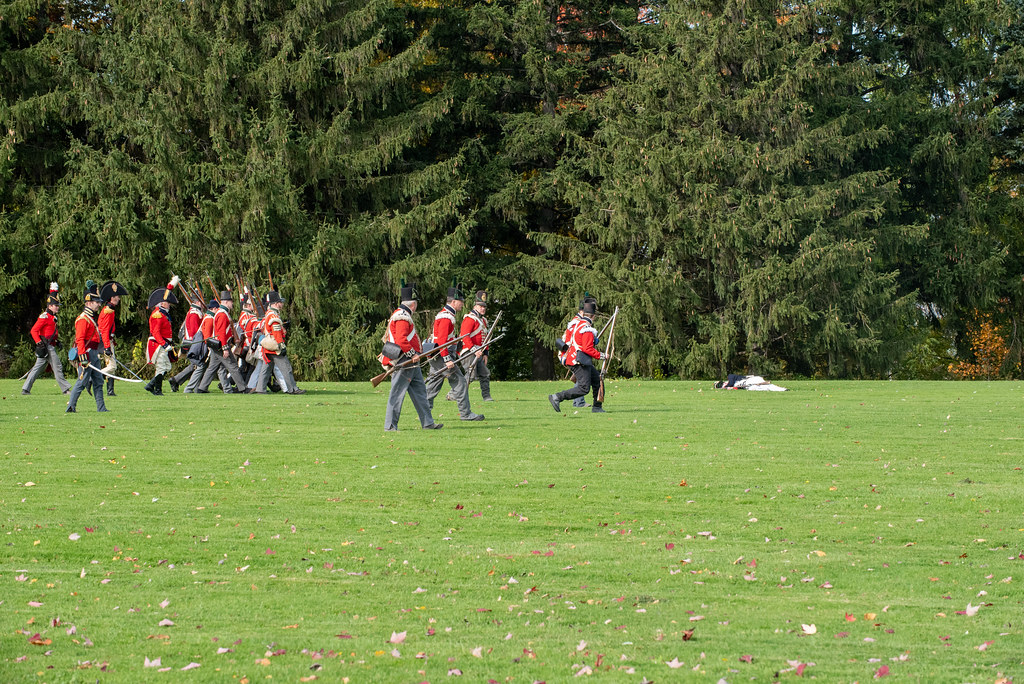
Nikon D750 – AF-S Nikkor 70-200mm 1:2.8G
Nikon D750 – AF-S Nikkor 70-200mm 1:2.8G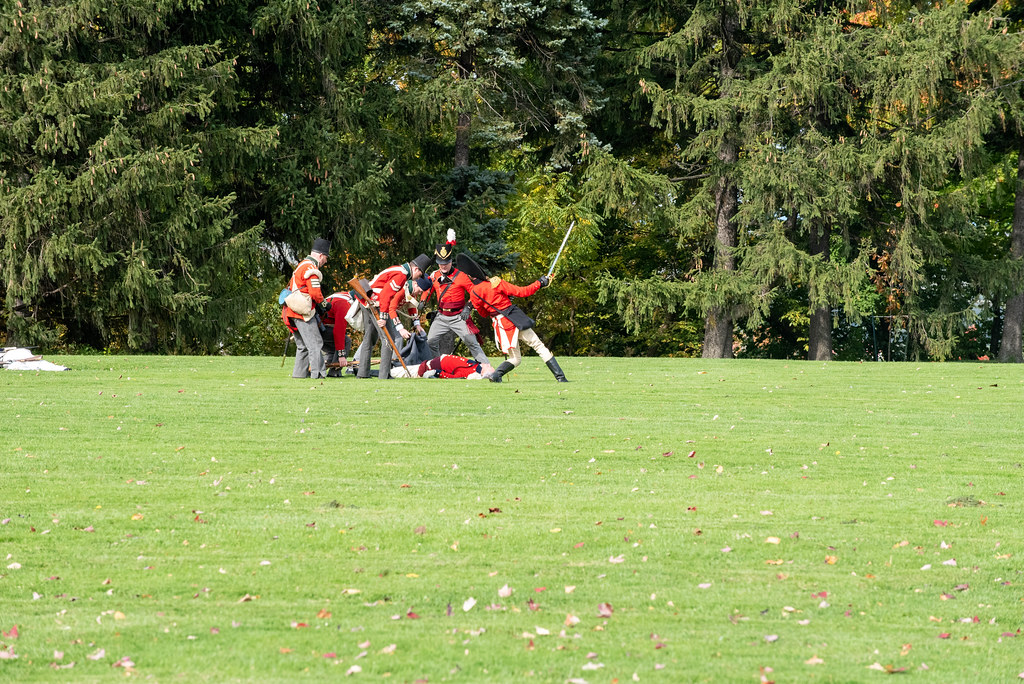
Nikon D750 – AF-S Nikkor 70-200mm 1:2.8G
Nikon D750 – AF-S Nikkor 70-200mm 1:2.8G
At this point, General Brock rode up with some extra reinforcements. Rallying the surviving militia and regulars from his old regiment, the 49th, he organised a charge into the village. If he didn’t take bold action, the battle would be lost; spurring the troops on and taking a position at the front, the British pushed the Americans out of Queenston. But at the Heights, the British resolve faltered, and a quick rebuke from Brock regained their courage. But American sharpshooters in the trees easily picked out the tall General Brock, resplendent in the uniform of a British Major General. With two shots, the General went down without a word. Lieutenant-Colonel MacDonnell tried to rally the troops, but when he to was taken down, the British retreated to Vrooman’s Point. But the Americans now faced another menace, for hidden in the trees were Mohawk warriors; though small, their tactics made the Americans fear thousands. And the Americans already had a deep fear of what the Indigenous peoples would do if they were captured. The war cries and irregular musket fire carried across the river; no American militia man would get in a boat. We have the brave actions of the Mohawk to thank for the victory at Queenston, as they kept the Americans in place on the Heights with a slowly dwindling army. And they kept up the action for several hours before General Rodger Hale Sheaffe arrived at the Heights with a large group of regulars. Now with Mohawks, Militia, Colour Corps, and regulars from the 49th and 41st Regiments, General Sheaffe used a hidden path to scale the heights. The Americans found themselves quickly outnumbered and outgunned, fighting against the edge of a cliff and surrendered without means of escape.

Nikon D750 – AF-S Nikkor 70-200mm 1:2.8G
Nikon D750 – AF-S Nikkor 70-200mm 1:2.8G
Nikon D750 – AF-S Nikkor 70-200mm 1:2.8G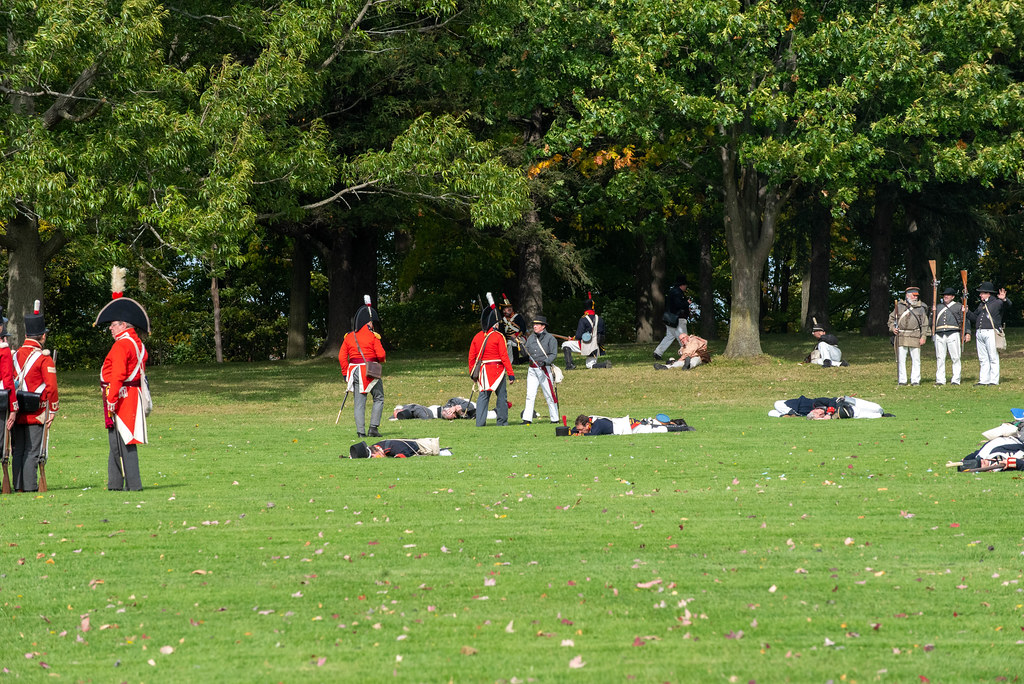
Nikon D750 – AF-S Nikkor 70-200mm 1:2.8G
I’ll admit, it was good to see the ‘big red machine’ in action, and while I could not say hi to all my friends in the British line, I saw a few of you. Everyone was on point, both the American and British forces. I enjoyed capturing the action from a distance, and you all made an excellent show. It was also good to see a proper War of 1812 reenactment, as the last one I went to was more aimed at the Napoleonic conflicts. You can, as always, check out the rest of the images on Flickr. And if you want to learn more about the Anglo-American War of 1812, check out my project page.